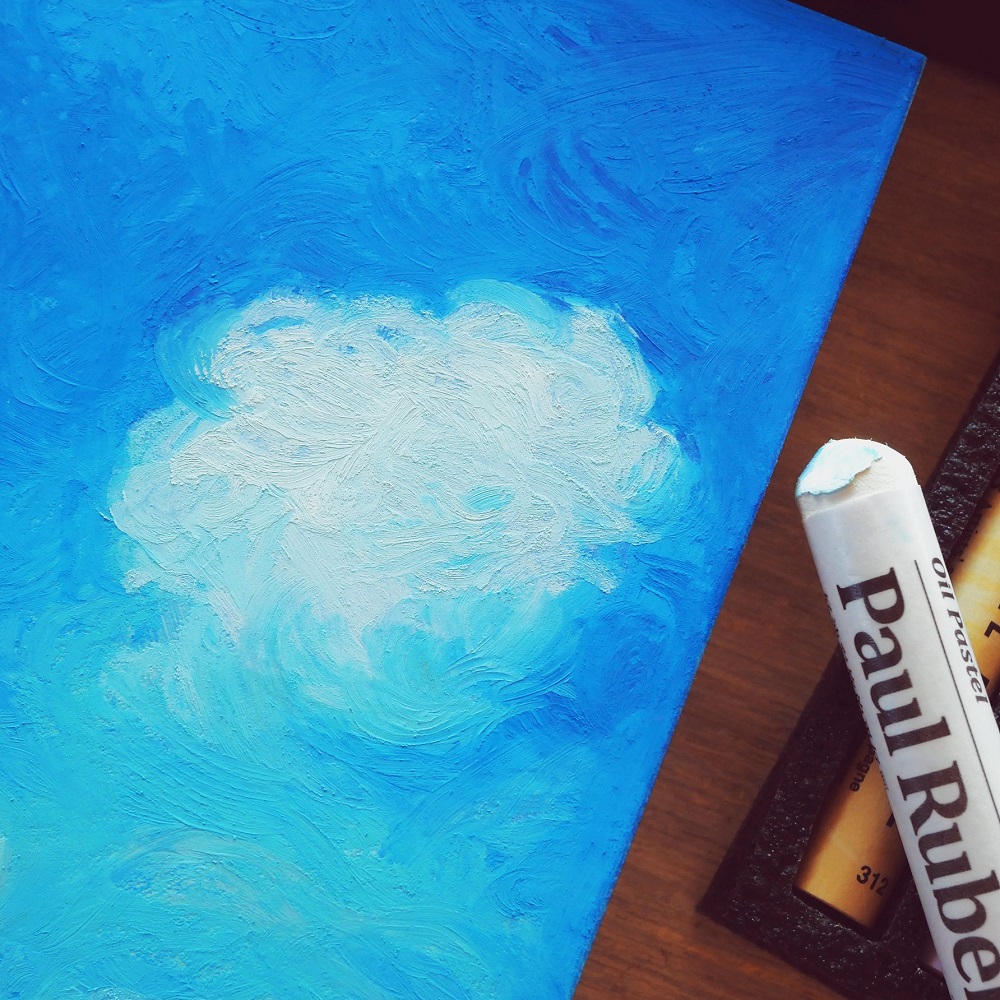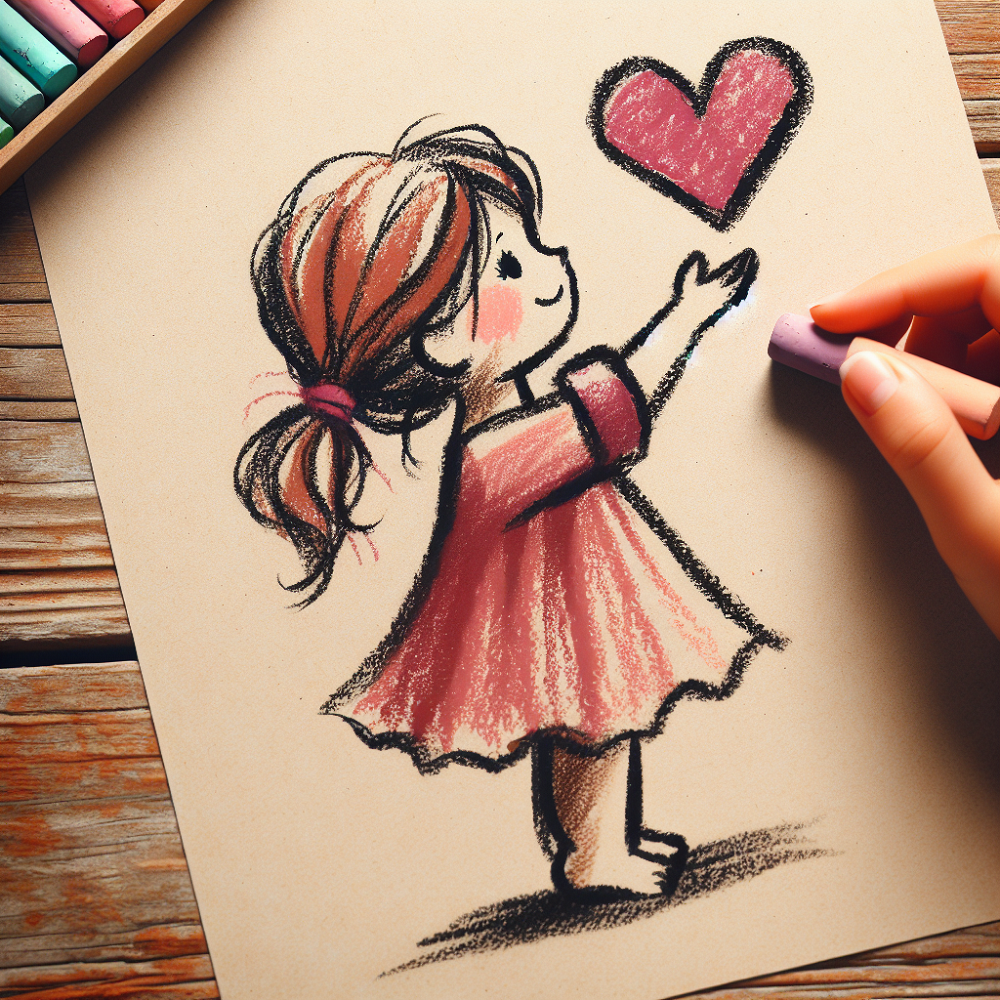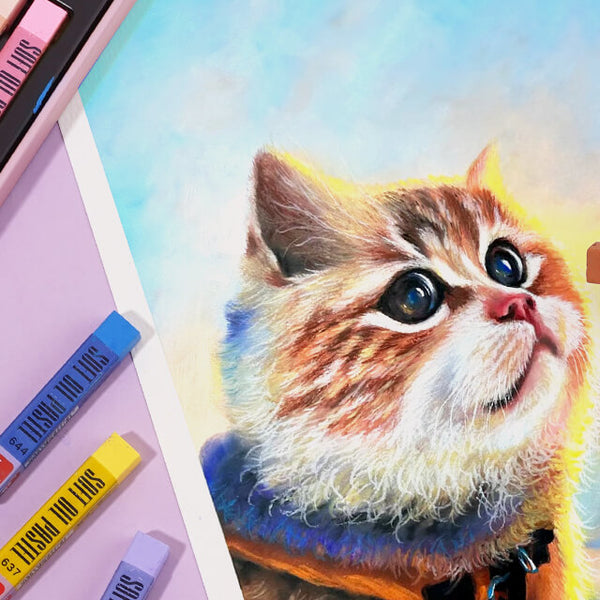Oil pastel art opens a world of vibrant creativity, drawing in artists from all walks of life. Known for their bright colors and unique texture, oil pastels are a popular medium that allows for both bold strokes and delicate blends. Whether you’re aiming to create intricate landscapes or abstract expressions, getting started with oil pastels can be rewarding and enjoyable. This guide will take you through the essentials of oil pastel art for beginners, helping you to jump right into your creative journey.
Understanding Oil Pastels
What Are Oil Pastels?
Oil pastels are a versatile drawing tool with a creamy texture that combines pigment with a non-drying oil and wax binder. Unlike regular pastels, which may feel chalky and dusty, oil pastels provide a smooth application that feels richer and more vibrant. This unique mixture allows them to glide effortlessly across the surface, creating intense color and a beautiful finish. They are perfect for artists who want to explore layering and blending techniques while enjoying a more forgiving medium.
Comparison with Other Mediums
Understanding how oil pastels differ from crayons, chalk pastels, and traditional oil paints can help you determine whether they suit your artistic needs. Crayons tend to be harder and lack the richness of color found in oil pastels. Chalk pastels are more powdery and require different handling techniques to avoid dust. Traditional oil paints need solvents and brushes, whereas oil pastels can be used straight from the stick and on a variety of surfaces without the need for additional materials. Each medium has unique features that cater to different artistic styles, but the creamy texture of oil pastels makes them a favorite for many artists.

Essential Supplies for Oil Pastel Art
Basic Tools and Materials
Before diving into your first oil pastel artwork, it’s essential to gather the right supplies. You’ll need a set of quality oil pastels—brands like Sennelier, Crayola, or Faber-Castell offer great options for beginners. A sketchbook or suitable paper designed for oil pastels will enhance your experience. Moreover, choose a heavier paper, like mixed media or watercolor paper, to withstand layering.
Additional Tools
While pastels and paper form the core of your supply list, consider adding a few extra tools to elevate your work. Blending stumps or tortillons help create smooth transitions between colors. A palette knife can assist in scraping layers to reveal new colors below. Finally, don’t forget to keep a clean cloth handy for wiping your fingers as you switch between colors. With the right tools at hand, you can simplify your creative process and achieve stunning effects.
Choosing the Right Surface
Best Papers for Oil Pastels
The choice of paper significantly impacts your final artwork. Textured or rough surfaces allow for better adherence of the pastel, helping to capture more pigment. Specific brands offer papers designed explicitly for oil pastels, making them an ideal choice for optimal blending and layering. Look for papers with a heavier weight (around 200gsm or thicker) to withstand the pressure of layering pastel colors.
Experimenting with Different Surfaces
While standard drawing paper works well, don’t shy away from experimenting with various surfaces. Oil pastel art for beginners can also work on canvas, wood, or even cardboard. Each surface will yield different results, enhancing the textures and colors of your work. Keep in mind that some surfaces may require an additional coat of gesso to improve adhesion and prevent the oil from seeping through.

Essential Techniques for Beginners
Blending Techniques
One of the most enjoyable aspects of oil pastel art for beginners is their capacity for blending. You can blend colors directly on the paper using your fingers, a blending stump, or a cotton swab. Start by applying two or more colors side by side, then gently rub the area where they meet. This technique creates a smooth gradient and adds depth to your artwork. Experiment with different tools to discover which method feels most comfortable for you.
Layering for Depth
Layering is key when working with oil pastel art for beginners. Start with a base layer and build up to more intense colors. Use light pressure while applying the first layers to create a smooth foundation. As you progress, apply heavier pressure to add detail. You can work in either a top-down or side-to-side manner; just remember to allow previous layers to dry slightly before adding more. This technique creates a radiant and rich composition full of life.
Scratch Techniques
Another fun technique to explore is scratching. This involves using a sharp object, like a palette knife, to scrape away layers of oil pastel to reveal underlying colors. This method works well for creating textures or fine details and can add an exciting dimension to your artwork. Combine scratching with blending for unique and captivating effects that show depth and versatility.
Tips for Color Selection and Composition
Choosing Your Color Palette
Selecting the right colors can enhance the emotional impact of your artwork. Begin with a limited palette—perhaps primary colors plus black and white. This helps you focus on mastering blending and layering without overwhelming yourself. Once you feel comfortable, expand your palette and explore different color combinations to create mood and harmony.
Understanding Composition
Composition plays a significant role in creating visually appealing artwork. Familiarize yourself with the rule of thirds, which divides the canvas into nine equal parts to help you position focal points effectively. Play with balance, symmetry, and asymmetry to guide the viewer’s eye throughout your piece. Sketching a rough layout before applying pastels can help you visualize how different elements will interact in your final work.

Embracing Mistakes and Experimentation
Turning Mistakes into Opportunities
As a beginner, you might worry about making mistakes. Remember that art is about exploration and personal expression. If you find something doesn’t look right, embrace it! Oil pastels are forgiving; you can layer over mistakes or even scrape them away. Every error offers a chance to learn something new and develop your unique style.
Encourage Experimentation
Don’t hesitate to step outside your comfort zone. Try different styles, subject matters, and techniques. Whether you paint a landscape, portrait, or abstract piece, allowing yourself to play will lead to creative growth. Experimenting can unleash new ideas and inspire future projects. The more you create, the better you’ll understand your preferences and style.
Resources for Continuing Your Journey
Learning from Others
The art community is filled with resources to help you advance your skills. Online platforms such as YouTube and Skillshare provide countless tutorials on oil pastel techniques, color theory, and composition. Watching other artists can inspire your creativity and introduce you to new techniques.
Taking Classes
Consider taking a local art class or workshop focused on oil pastels. Engaging with other artists, sharing experiences, and receiving direct feedback can significantly enhance your learning process. Local art schools or community centers often host classes tailored for beginners. Not only will you improve your skills, but you’ll also gain valuable connections within the art community.
Books and Online Communities
Books about oil pastels can offer valuable insights into the materials and techniques used by professional artists. Additionally, joining online communities, like Reddit or Facebook art groups, can provide ongoing support and feedback. Sharing your work opens opportunities for critique and encouragement from other artists who are on similar journeys.
Your Path to Oil Pastel Mastery
Oil pastel art is a fantastic way to express your creativity and explore the vibrant world of color. With understanding the medium, gathering the right supplies, mastering essential techniques, and learning from others, you are well on your way to creating stunning artwork. Remember that each piece you create contributes to your growth as an artist. Embrace the journey, enjoy the process, and let your creativity flow freely on the canvas. With oil pastels in hand, a world of artistic exploration awaits you. Happy creating!